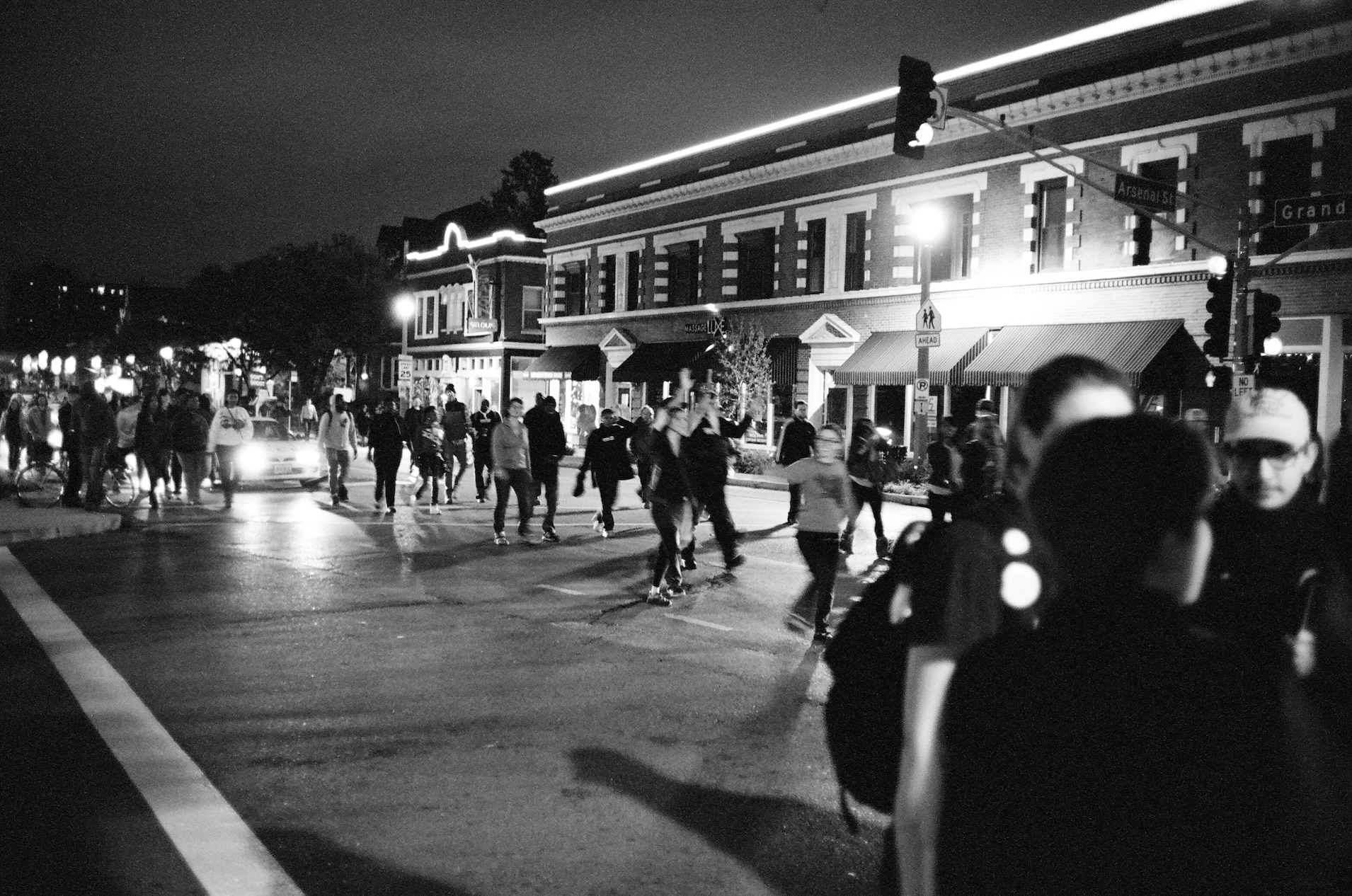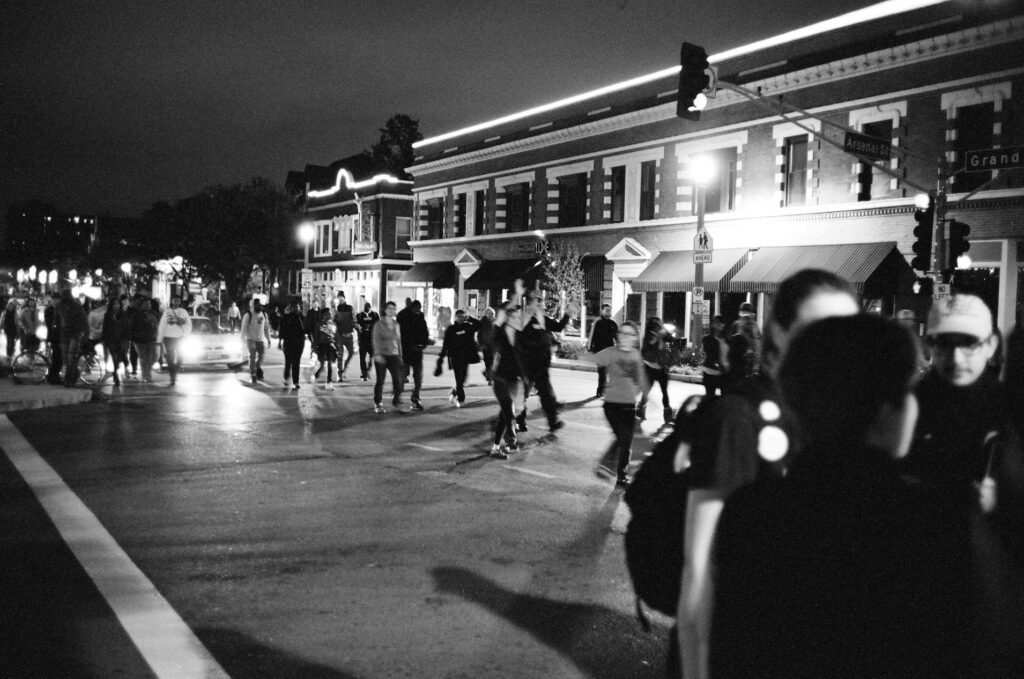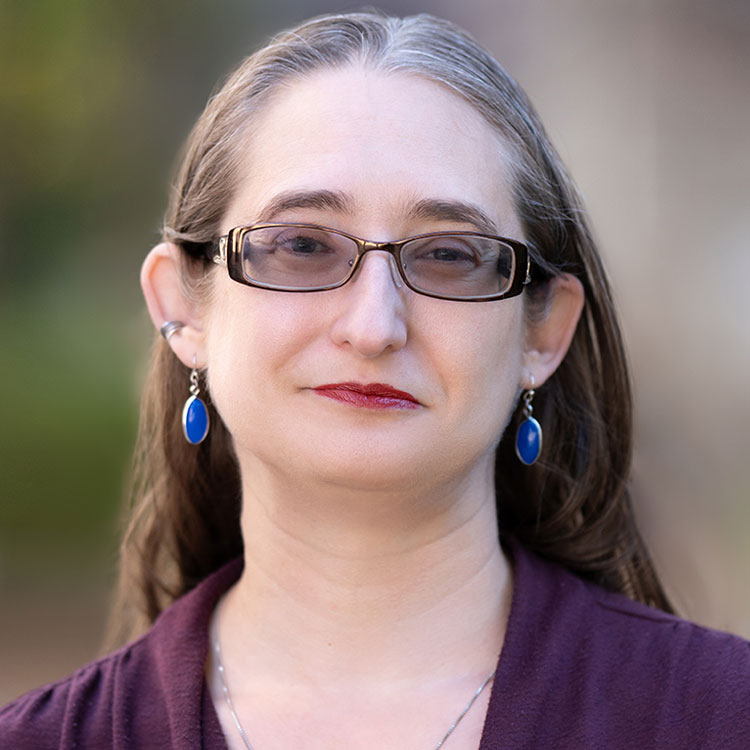
From the Archives: Documenting Ferguson

When protesters took to the streets in 2014 after the shooting death of Michael Brown, Jr., librarians and archivists at WashU Libraries realized that important moments of history would be captured by people using cell phones and digital recorders.
Over 700 digital items were contributed by community members following the shooting death of eighteen-year-old Michael Brown, Jr. by police officer Darren Wilson in Ferguson, Missouri, on August 9, 2014.
Free, worldwide access to view these items is available at Documenting Ferguson.
Over thirty contributors provided original digital content, such as images, video, audio, and stories related to memorials, community meetings, rallies, and protests that occurred in Ferguson and throughout the broader region of St. Louis County and City.
Updated Site

Since Documenting Ferguson first launched, digital technology and the resources and tools available for archiving digital history have expanded. Many lessons on how to archive social uprisings and protest movements in an ethical manner have been created through the dedicated and hard work of archivists and activists who are Black, Indigenous, and people of color.
While the content of the original site remained relevant, Libraries staff recognized that some technical components were out of date. Since early 2024, we have worked to migrate the contents, update the structure, and provide today’s users with clear metadata describing the origin of each item. You can read more about these steps on the Project Background page.
Adding to the site
Although the method for contributing to Documenting Ferguson has changed since the site launched ten years ago, the Libraries remain committed to helping preserve this history for future generations. These visual and digital records are powerful tools. They can be used for activism and organizing in the present. And when future generations want to know the history of these events, these documents provide vital firsthand perspectives.
Additions to the archive could be:
- digital (or physical): photographs, videos, art, or other documentation
- created in 2014 to 2015, or from anniversaries or memorials in following years
- materials related to community efforts inspired by, or rooted in 2014 events
More information about contributing items is available on the new site, or contact Miranda Rectenwald, curator of local history at mrectenwald@wustl.edu.
Additional Resources
- The Blacktivists, a collective of trained Black archivists who prioritize Black cultural heritage preservation and memory work
- Documenting the Now, open-source tools and community-centered practices that support the ethical collection, use, and preservation of publicly available content shared on the web and social media
- Personal Digital Archiving Guide from the Library of Congress
- Project STAND: Student Activism Now Documented
- WITNESS, helps people use video and technology to protect and defend human rights

